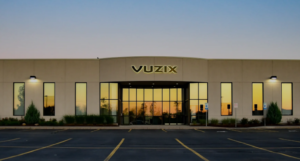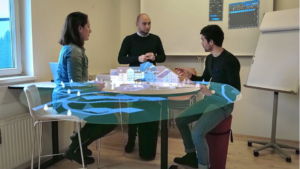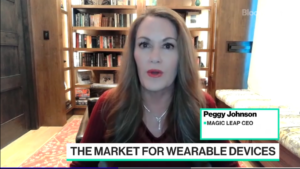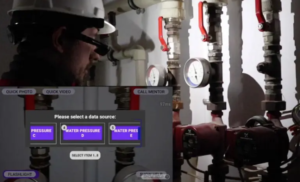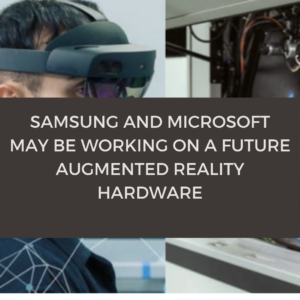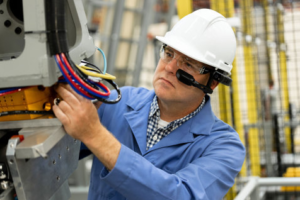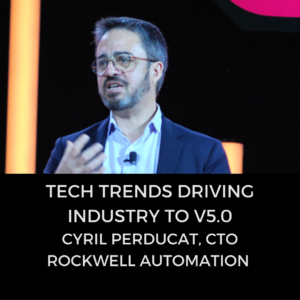Rarely has industrial automation changed at such an exponential rate. The combination of various technology trends has propelled enterprises into Industry 4.0 so fast that Frost & Sullivan has already delivered an Industry 5.0 blueprint to guide the journey.
Edge-and-cloud integration, converged development environments, artificial intelligence (AI) and autonomous production are far more than conceptual. These technological innovations are already happening.
“This is a unique time in our industry,” explained Cyril Perducat, who shared the automation supplier’s plans for the immediate future at Automation Fair 2021 in Houston. “The future is a trajectory, a path that we are already on. When I think of Industry 4.0, which was first coined in 2011, there is certainly a lot of learning over the past 10 years of what Industry 4.0 can deliver. And COVID has accelerated many of those dimensions.”
Remote connectivity, advanced engineering with multiple digital twins, mixing physical and digital assets, and the change of human-machine interaction are driving industry along that path toward Industry 5.0.
Perducat questioned whether it’s too soon to look at Industry 5.0 when all the promise of Industry 4.0 has not yet been delivered, but he identified five changes that are attainable and impactful in Frost & Sullivan’s comparison of Industry 4.0 to Industry 5.0:
- delivery of customer experience,
- hyper customization,
- responsive and distributed supply chain,
- experience-activated (interactive) products, and
- return of manpower to factories.
“We are able to bring more capabilities to people,” said Perducat. “Human resources are scarce. By delivering systems that make the human-machine interaction more efficient, we make it more impactful while remaining safe.”
size=0 width=”100%” noshade style=’color:white’ align=center>
Rockwell Automation has identified four areas where technology can move companies along that journey:
- evolution of cloud, edge and software,
- universal control and converged integrated development environments (IDEs),
- AI native operation management, including software as a service (SaaS) and digital services, and
- autonomous systems and augmented workforce.
“We believe in control at the enterprise level,” explained Perducat. “We believe in systems with software-defined architecture and the underlying hardware. It doesn’t mean hardware is becoming obsolete. And it’s not that every piece of the system needs to be smart. The entire system, from the device to the edge and to the cloud, is smart. Edge + cloud architecture is fundamental.”
In the converged environment, control, safety and motion all come together and must work in an integrated fashion. This is especially true with the growth of robotics. “The boundaries between control and robotics are becoming more and more blurred,” said Perducat. “Safety is very fundamental in this more complex architecture. It does not work if it is not safe.”
Operations management becomes more efficient when AI is native to the architecture and is at the level of the enterprise. “A holistic view requires a lot of data and the ability to process that data,” explained Perducat. “Part of this has to be autonomous using the power of applied AI; it’s not just one more tool but is everywhere in the architecture. We can use AI on the machine to translate vibrations into data. We can think of AI in terms of process modeling. And model predictive control is evolving with AI. When you can orchestrate all the elements of the architecture, that is a system.”
FactoryTalk Analytics LogixAI is a modeling engine that enables closed-loop optimization through four steps—observe (sensor), infer (model), decide (controller) and act (actuator).
Finally, by transforming from automated systems to autonomous systems, it enables better decisions to expand human possibility.
AI can also help to simplify a new generation of design. “You can use AI to help to generate blocks of code, like individuals working together peer-to-peer, but one of them is AI, augmenting human possibility,” explained Perducat.
“We see the next step to autonomous manufacturing as an opportunity to deliver value to our customers,” he said. “The autonomous system is reimagining the fundamental principles of autonomous control systems. You don’t need to rip and replace. We have the ability to augment existing systems with new technology.”
Perducat stressed that it cannot be just technology innovation. “Technology only creates possibilities or potential values,” he explained. “It has to be accessible by users, so we have to innovate on the user experience point of view. We want to bring that to all the products, experiences and models. In a digital native world, innovation extends beyond technology and features.
